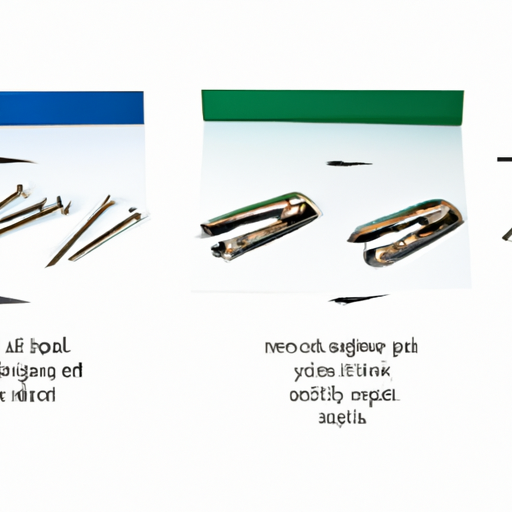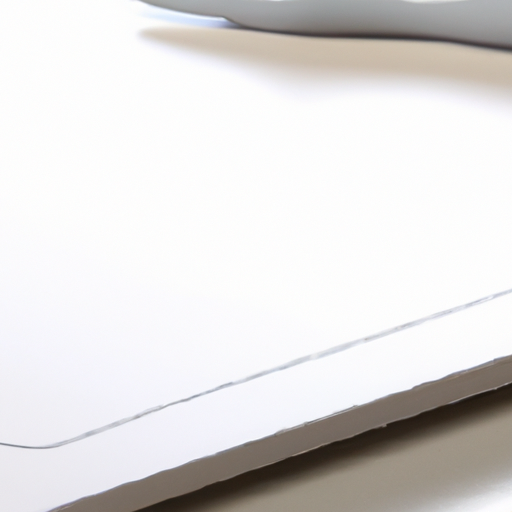Mounting melamine dry erase boards can be a daunting task, especially if you’re not sure where to start. But fear not, because we’ve got you covered with these essential tips that will make the process a breeze. From choosing the right hardware to ensuring a level installation, we’ll walk you through all the necessary steps to get that board up on the wall and ready for all your brainstorming sessions and important notes. So grab your tools and let’s get started!

Choosing the Right Mounting Hardware
When it comes to mounting a melamine dry erase board, the first step is to choose the right mounting hardware. This is crucial because it ensures that the board is securely attached to the wall and can withstand the weight of the board and any additional pressure that may be applied to it.
Consider the weight of the board
Before selecting the mounting hardware, it’s important to consider the weight of the melamine board. Different boards can vary significantly in weight, so it’s essential to choose hardware that can properly support the specific board you have. Be sure to check the manufacturer’s specifications or consult the packaging to determine the weight of your board.
Evaluate the type of wall
The type of wall you have will also play a role in determining the appropriate mounting hardware. For example, if you have a drywall, you’ll need to use wall anchors in order to secure the board to the wall. On the other hand, if you have a concrete or brick wall, you may require different hardware such as masonry screws or anchors.
Select appropriate hardware
Once you have considered the weight of the board and evaluated the type of wall, it’s time to select the appropriate mounting hardware. There are various options to choose from, including brackets, clips, or wall anchors, depending on your specific requirements. It’s always a good idea to consult with a hardware store professional to ensure you select the right hardware for your needs.
Ensure the hardware is compatible with melamine boards
Lastly, it’s important to ensure that the mounting hardware you choose is compatible with melamine boards. Melamine is a smooth and slick surface, so it may require specific hardware that can securely hold onto the board without damaging it. Look for hardware that is designed specifically for use with melamine or dry erase boards to ensure a proper fit.
Preparing the Wall Surface
Before mounting your melamine board, it’s crucial to properly prepare the wall surface. By doing so, you’ll ensure a secure and long-lasting installation.
Inspect the wall for damage
Start by inspecting the wall for any signs of damage, such as cracks, holes, or uneven surfaces. It’s important to address any existing damage before proceeding with the installation. You can use a putty knife to scrape off loose paint or plaster and make any necessary repairs.
Clean the wall surface
After checking for damage, thoroughly clean the wall surface. Remove any dust, dirt, or grease using a mild detergent and water. This will ensure proper adhesion between the wall and the mounting hardware.
Patch any holes or cracks
If you found any holes or cracks during the inspection, it’s essential to patch them up before proceeding. Use a high-quality wall patching compound and a putty knife to fill in any imperfections. Once the compound is dry, sand it down until the surface is smooth and flush with the rest of the wall.
Ensure the wall is smooth and dry
Before mounting your melamine board, make sure the wall surface is smooth and completely dry. Any bumps or damp spots can affect the stability of the installation. Use sandpaper to smooth out any rough areas and allow the wall to dry thoroughly before proceeding.
Locating the Mounting Position
The next step in mounting your melamine board is to determine the ideal position on the wall. This involves finding the right height, locating the studs or using wall anchors, and considering the viewing angle and accessibility.
Determine the ideal height for the board
The height at which you mount your melamine board is a personal preference, but there are a few factors to consider. Take into account the average eye level of the intended users and ensure that the board is easily accessible for everyone. Avoid installing it too high or too low, as this can strain the neck and make it difficult to use.
Find the studs or use wall anchors
Once you have determined the ideal height, it’s important to locate the studs in the wall. Studs provide the strongest support for heavy objects like melamine boards. Use a stud finder to locate the studs and mark their positions on the wall.
If studs are not conveniently located where you want to mount the board, you may need to use wall anchors. Wall anchors provide additional support for the board and allow you to securely mount it to the wall. Make sure to choose the appropriate wall anchors for your specific wall type and follow the manufacturer’s instructions for installation.
Consider the viewing angle and accessibility
In addition to the height and stud positioning, it’s also crucial to consider the viewing angle and accessibility of the melamine board. Ensure that the board is mounted at a comfortable angle for users to view and write on without straining their necks or wrists. Additionally, consider the surrounding environment and any obstructions that may affect visibility.
Measuring and Marking
Accurate measurement and marking are crucial for a successful installation of your melamine board. By taking the time to do this step properly, you’ll ensure that the board is level and securely attached to the wall.
Measure and mark the mounting holes on the back of the board
Start by measuring and marking the mounting holes on the back of the melamine board. Use a tape measure to measure the distance between the holes and mark them with a pencil or marker. Take care to ensure the measurements are accurate and symmetrical.
Transfer the measurements onto the wall
Next, transfer the measurements from the back of the board onto the wall. Use a level and a pencil to mark the exact positions where the mounting holes will be drilled. Double-check the alignment and ensure that the marks for each hole are accurately placed.
Double-check the alignment and levelness
Before moving on to drilling the mounting holes, double-check the alignment and levelness of the marked positions. Use the level to ensure the marks are perfectly horizontal or vertical, depending on the orientation of your melamine board. This step is crucial for a professional-looking installation.

Drilling Mounting Holes
Once you have measured, marked, and double-checked the positions of the mounting holes, it’s time to drill the holes in the wall. This step requires some precision to ensure that the holes are the correct size and depth.
Use an appropriate drill bit size
Select the appropriate drill bit size for your mounting hardware. It should match the diameter of the screws or wall anchors you are using. Using a drill bit that is too small or too large can result in loose or wobbly mounting.
Drill pilot holes into the wall
Start by drilling pilot holes into the marked positions on the wall. Pilot holes ensure that the screws or wall anchors go in smoothly and help prevent the wall from splitting or cracking. Make sure to drill straight and apply steady pressure to avoid any damage to the wall.
Ensure the depth of the holes matches the length of the screws
When drilling the pilot holes, it’s important to ensure that the depth matches the length of the screws or wall anchors. This will ensure a secure fit and prevent the hardware from protruding too far out from the wall. Use a depth gauge or measure the length of the screws to guide you while drilling.
Attaching the Mounting Hardware
With the mounting holes drilled, it’s time to attach the mounting hardware to the wall. This is a critical step as it determines the stability and security of the melamine board on the wall.
Insert wall anchors, if required
If you are using wall anchors, insert them into the pilot holes following the manufacturer’s instructions. Wall anchors provide extra support and strength for the mounting. Make sure they are snugly fitted into the holes for optimal stability.
Attach brackets or clips to the wall
Depending on the type of mounting hardware you have selected, attach the brackets or clips to the wall. Ensure that they are securely fastened to the wall and aligned with the marked positions for the mounting holes. Use screws or other appropriate fasteners to attach the hardware. Make sure to follow the manufacturer’s instructions for proper installation.
Secure the hardware tightly
Once the brackets or clips are attached to the wall, make sure to secure them tightly. Use a screwdriver or appropriate tools to ensure that the mounting hardware is firmly in place and there is minimal play or movement. A secure attachment is crucial for the stability of the melamine board.

Mounting the Melamine Board
Now that the mounting hardware is securely attached to the wall, it’s time to mount the melamine board itself. This step requires some care to ensure that the board is properly aligned and securely fastened to the hardware.
Lift the board onto the wall
With the help of another person, carefully lift the melamine board and align it with the mounted brackets or clips on the wall. Take your time to ensure that the board is level and properly positioned.
Align the mounting holes with the hardware
Once the board is in position, align the mounting holes on the back of the board with the hardware on the wall. Ensure that the holes line up perfectly with the brackets or clips. This step is crucial for a secure and stable installation.
Attach the screws and tighten
Finally, attach the screws provided with the mounting hardware through the holes on the back of the board and into the brackets or clips on the wall. Use a screwdriver or appropriate tool to tighten the screws, ensuring that they are securely fastened without overtightening and damaging the melamine board. Repeat the process for all the mounting holes.
Checking Alignment and Stability
After mounting your melamine board, it’s important to check its alignment and stability to ensure a professional and functional installation.
Ensure the board is level and straight
Use a level to check if the melamine board is perfectly level and straight. Make any necessary adjustments by slightly loosening the screws and repositioning the board. Once it is level and straight, retighten the screws securely.
Check if all corners are securely mounted
Inspect all corners of the melamine board to ensure that they are securely mounted and there is no movement or wobbling. Gently try to move the board and ensure that it is stable and firmly attached to the wall. If any corner feels loose, retighten the screws to secure it properly.
Test the stability by shaking the board gently
To further test the stability of the melamine board, gently shake it to see if it wobbles or moves excessively. A properly mounted board should remain stable and not shake or sway. If you notice any instability, check the screws and mounting hardware to ensure they are tightly secured.

Allowing Sufficient Drying Time
Once the melamine board is mounted, it’s important to allow sufficient drying time, especially if you have used adhesive or other bonding agents during the installation.
Wait for the adhesive to dry, if applicable
If you have used adhesive or any other bonding agent to mount the melamine board, follow the manufacturer’s instructions for the required drying time. Avoid using the board until the adhesive is fully dry to ensure a strong and secure attachment.
Avoid using the board until it is fully installed and stable
Even if you haven’t used adhesive, it’s still a good idea to avoid using the melamine board until it is fully installed and stable. This allows the mounting hardware to settle and ensures that the board is securely attached to the wall. Patience is key to achieving a long-lasting and reliable mounting.
Additional Considerations
In addition to the main steps outlined above, there are a few additional considerations to keep in mind when mounting a melamine board.
Consider the location and environment
Before mounting your melamine board, consider the location and environment where it will be installed. Ensure that the area is well-lit and easily accessible for users. If the board will be exposed to direct sunlight or high humidity, choose a melamine board specifically designed for such conditions to prevent warping or fading.
Use additional support if needed
In certain situations, you may need to provide additional support for your melamine board. This can include installing additional brackets or supports if the board is exceptionally large or heavy. Consult with a hardware store professional or refer to the manufacturer’s guidelines for extra support options.
Follow the manufacturer’s instructions
Lastly, it’s essential to always follow the manufacturer’s instructions when mounting a melamine board. Different boards and mounting hardware may have specific guidelines and recommendations that should be followed for optimal results. Ignoring these instructions can lead to an insecure or damaged installation.
By following these tips and steps, you will be well-equipped to mount your melamine dry erase board successfully. Remember to take your time, double-check your measurements, and ensure that the mounting hardware is securely attached to the wall. With a properly installed melamine board, you’ll have a functional and aesthetically pleasing addition to your space. Happy mounting!





